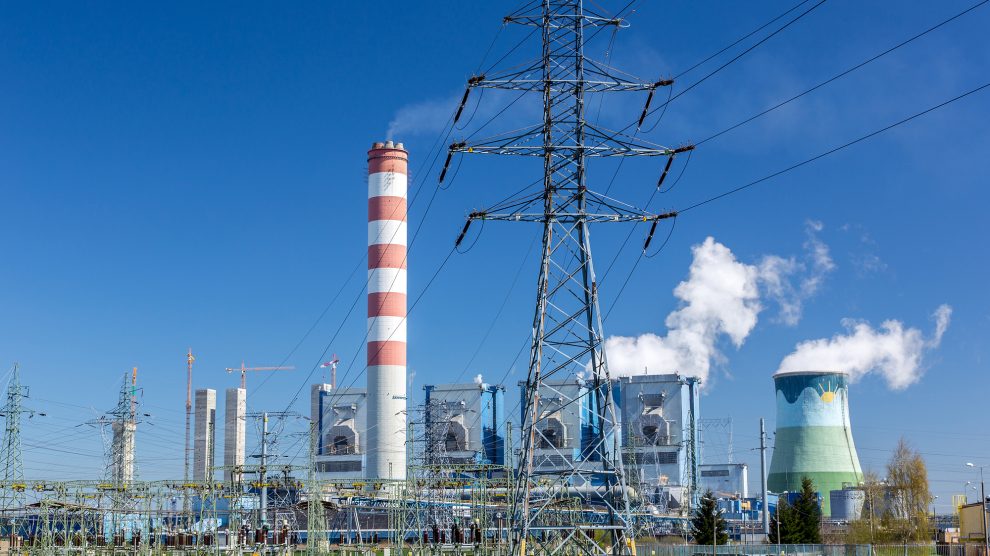A new report explains how the Polish electricity system will cope with the variability of production resulting from the increasing role of wind and solar.
Poland made headlines last week when a senior government official urged the European Union to “embrace” a plan to slash 90 per cent of the bloc’s greenhouse gas emissions by 2040.
According to a new report from a Warsaw-based think tank, Instrat, a 68 per cent CO2 reduction by 2040 ambitious, but feasible. In this scenario, 84 per cent of domestic electricity demand would be satisfied by renewable energy sources (RES).
- COP disappointment could open the door for small nuclear
- Opportunities abound for Western nuclear firms as CEE shifts away from Russia
- Donald Tusk’s reforms in Poland are politically-motivated
In the report, the Instrat team presented the results of analyses conducted using the PyPSA-PL modelling tool, which allows it to identify and simulate cost-optimal development paths for the Polish energy system.
“Our modelling is not predicting the future. We show the scenarios that Poland may follow until 2040. For each scenario, we indicate the mix of technologies that makes it possible and how much it will cost,” says the report’s lead author Patryk Kubiczek.
The research resulted in two scenarios for the ambitious development of RES—one takes into account the deployment of nuclear power advocated by the new Donald Tusk government, and the other shows the consequences of abandoning the nuclear programme.
The first scenario shows that even with the inclusion of nuclear in the mix, 84 per cent is a realistic and economically viable target for the share of RES in filling the national electricity demand in 2040. Nuclear would cover 14 per cent and natural gas the rest.
Kubiczek explains how the Polish electricity system will cope with the variability of production resulting from the increasing role of wind and solar.
“The deployment of RES has to be followed by an increase in storage capacity and an increase in demand flexibility due to the electrification of sectors. This way we will avoid the absurd 40 per cent loss of energy from wind and solar, as envisioned in the unofficial scenario published by the government in June 2023. Today we are demonstrating that a system based on weather-dependent RES, backed up by infrequently used conventional capacity, can work well.”
Nuclear power can support the transition but will not be its pillar
Instrat experts have prepared ambitious decarbonisation scenarios with and without nuclear.
The inclusion of nuclear power plants in the second half of the 2030s brings additional benefits, but even in 2040 they account for only 14 per cent of production.
The non-nuclear scenario is characterised by only slightly higher levels of installed RES capacity than the ambitious scenario with nuclear. This means that the main driver of decarbonisation in both scenarios is investment in renewables—faster to implement and with a shorter payback period.
“Investment in renewables cannot be held back in the hope of rapid development of nuclear power. Our analyses show that both technologies can work well together,” adds Kubiczek.
The availability of renewable energy enables an economy-wide phase-down of fossil fuels
The share of fossil fuel emitting sources is declining rapidly in each of the scenarios analysed as a result of the development of clean alternatives: wind and solar, as well as bioenergy and possibly nuclear power plants.
However, coal-fired power plants are also competing economically with natural gas-burning units. “Even the slower development of clean energy, according to the pessimistic Slow Transition scenario, does not necessarily extend the economic viability of coal-fired power generation—the RES gap in this scenario is cheaper to cover with additional gas-fired capacity,” says Michał Smoleń, the head of the Energy and Climate programme at Instrat.
However, lower utilisation of conventional power plants doesn’t mean their quick and total phase-out.
“Winter peak residual demand will remain a challenge for decades to come, especially considering additional demand from electrification of heating,” notes the Instrat expert.
Additional market interventions will thus be necessary to ensure operation of seldom-run reserves: at first, coal and natural gas power plants, and then increasingly generation based on hydrogen and bioenergy.
The share of coal in Polish electricity generation fell from about 70 per cent to some 60 per cent in 2022 amid rapid growth of renewable sources and rising electricity imports, according to another think tank, Forum Energii.
In its own report, published in November, it said that Poland must eliminate coal from power generation by 2035 as producing electricity from the fuel will not be economically viable, endangering energy security.
Unlike many news and information platforms, Emerging Europe is free to read, and always will be. There is no paywall here. We are independent, not affiliated with nor representing any political party or business organisation. We want the very best for emerging Europe, nothing more, nothing less. Your support will help us continue to spread the word about this amazing region.
You can contribute here. Thank you.







Add Comment